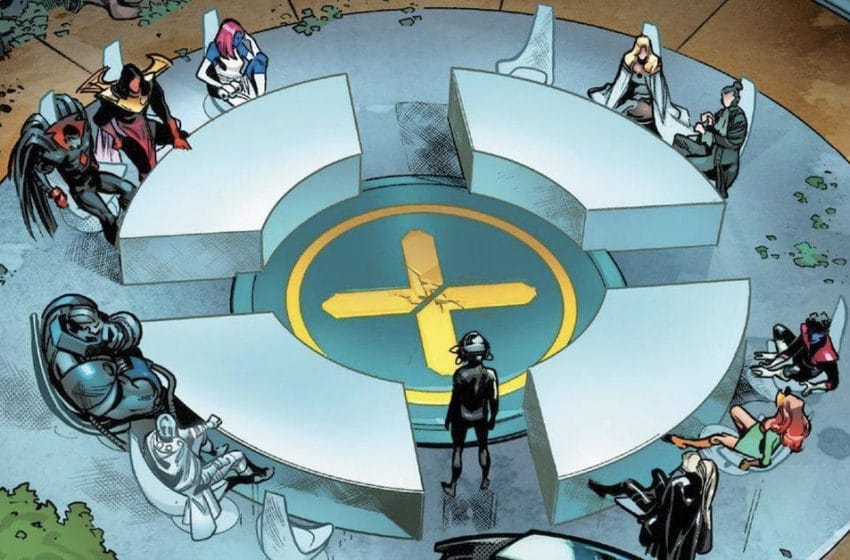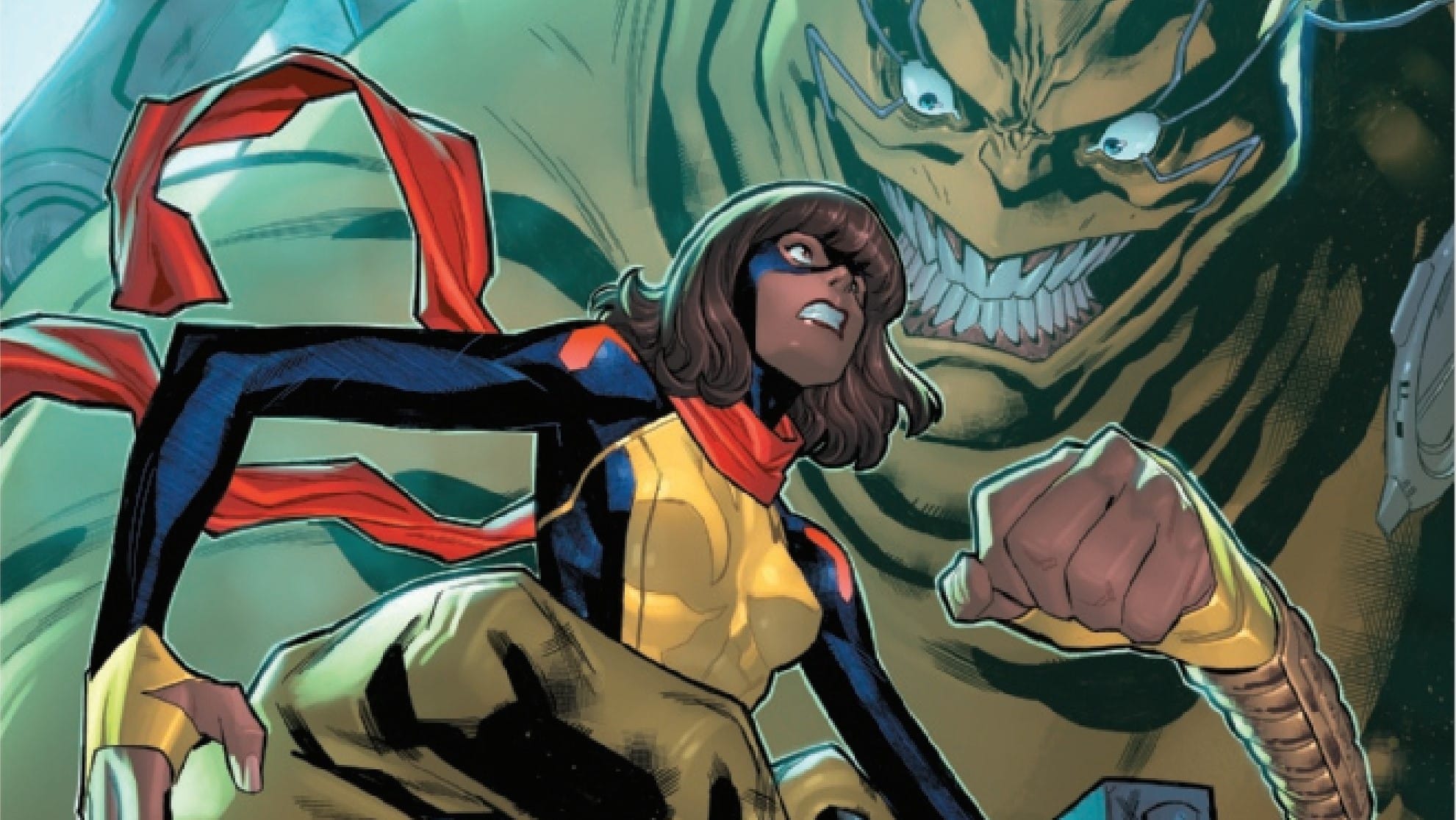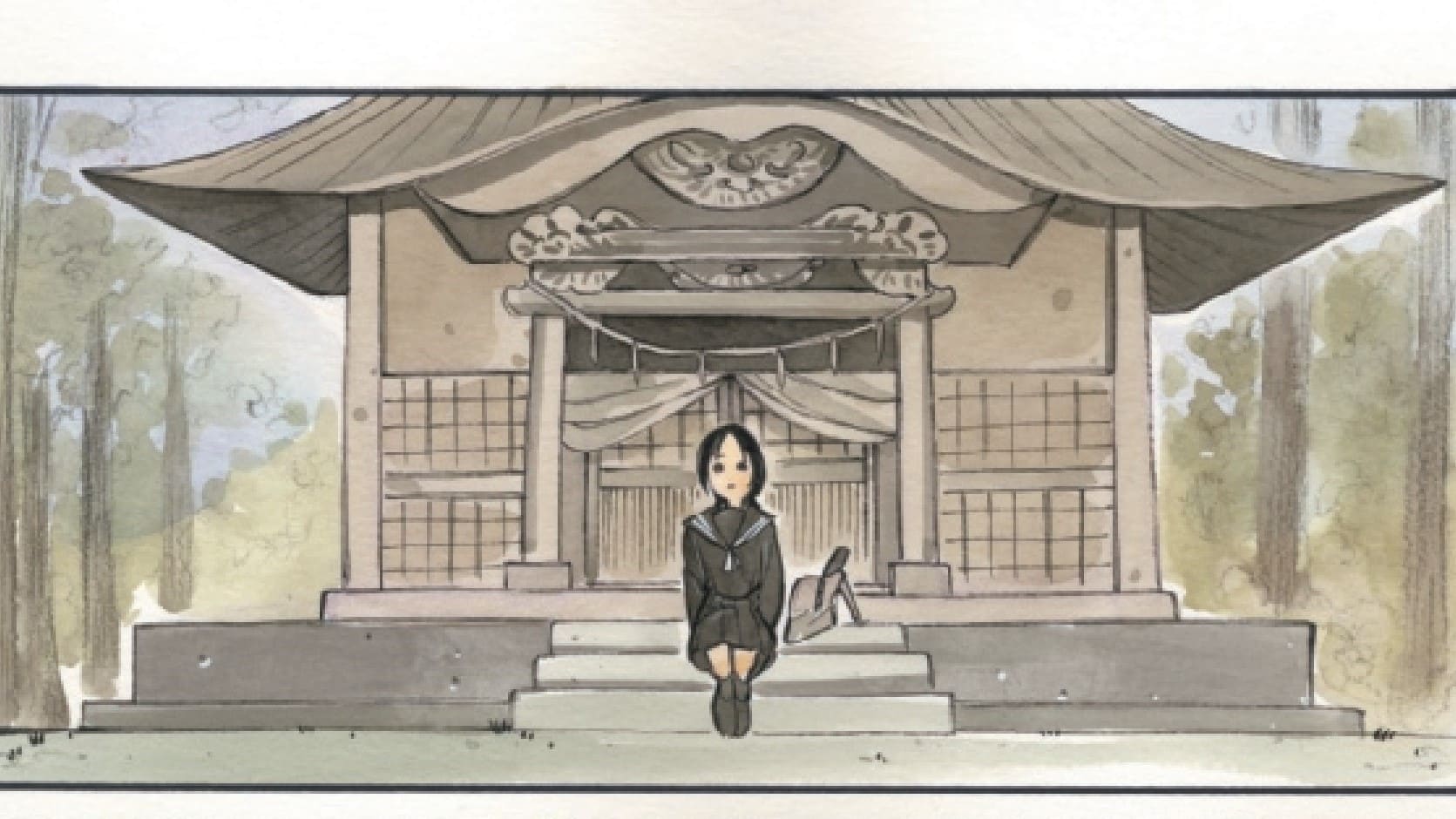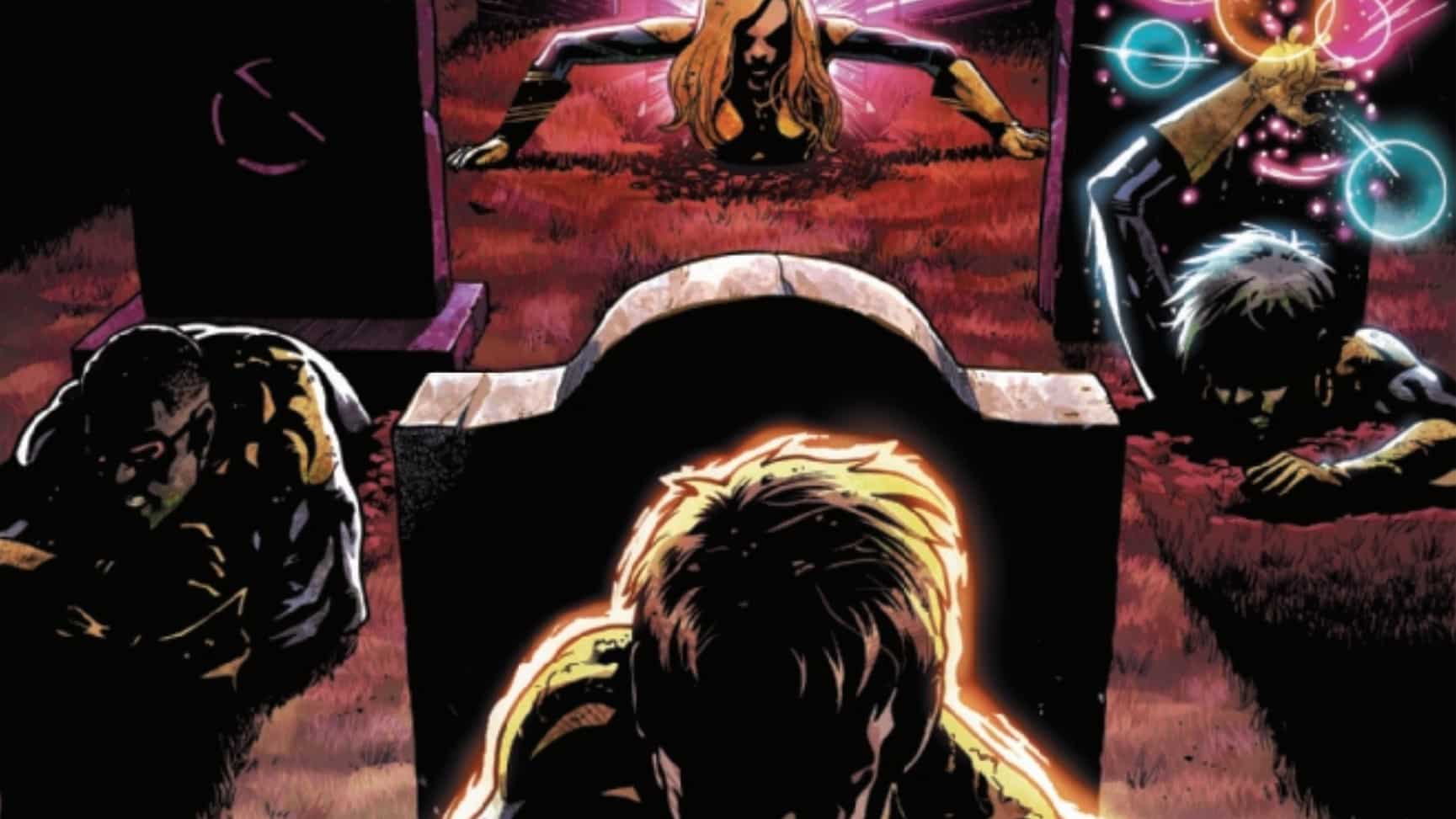In our earlier discussion regarding Inferno #2, Chris and I spent a little bit of time talking about new Quiet Council dynamics, but I really just couldn’t stop thinking about it. Here are some interesting things I noticed now that the Quiet Council is once again operating at full capacity. First, a quick breakdown of the new table arrangement:

I. The Summer Table No Longer Has A Summers
With the abdication of Jean Grey, and with Scott’s stepping down as Captain Commander, the Summers family no longer has a presence at Council sessions, save when Scott is fulfilling his duties as a now-regular Captain.
This is interesting for a couple of reasons—first, Summer was thematically resonant before in a way that it isn’t now, not just for the family name, but also because of Jean’s historical association with heat and fire. Second, because her seat’s been filled by none other than Piotr Rasputin, aka the Russian mutant Colossus, whom Claremont and Cockrum created specifically during the height of the Cold War. Oh right, and let’s not forget there’s an entirely separate cold war going on between Krakoa and Mikhail Rasputin, Piotr’s older brother, that may or may not involve Mikhail using a mutant with some kind of reality warping power to affect Colossus directly. The same man who stole the Cerebro Sword might have a mole on the council, now! Which brings me to my next point:
II. The Summer House Is Made Up Entirely Of Claremont-Era All-New X-Men
Jean technically fit this definition too, but she wasn’t created specifically for that team in the way that Ororo, Kurt, and Piotr were. These three, and the typical pop culture associations of summer (the season) with brightness and goodness (a whole other topic to go long on another time) really seem like they’re positioned to be the nominal “Good Guys” quadrant of the Council.
Except, of course, for all of those split loyalties. After all, Ororo has duties on Arakko, duties which are already taking up her time to the extent that she was barely able to intervene on behalf of the life of Shi’Ar Empress Xandra. If this continues, it could affect her ability to be present for Council sessions (again, see our coverage of Inferno #2 for my detailed thoughts about that possibility). Meanwhile, there’s the fact that Piotr is a) sitting in the same council as his ex-fiancee, Kate, whom he groomed from a very young age, and b) might be an unintentional mole for his brother.
Finally, there’s Kurt, who sits across from his actual mother! Nepotism and familial ties are historically pretty looked down upon in governmental bodies, and while I don’t think Kurt’s the type to go along unquestioningly with what his mother wants, he did agree to vote Destiny into the Council because he knew it would make her happy. As for Destiny, we’ll get to her. First:
III. The Spring Table Is a Uniquely Solidified Power Base
This was in the process of being laid out as early as HoXPoX, but has had time to really settle in. What that means is that, unlike every other table in the Council, the Spring table almost always works in unison. They absolutely have their internecine difficulties, up to and including murder, but whatever their squabbles, they come to the Council as a unified team with far more consistency than the other three tables. This will be significant going forward, given the way that Emma is now inclined to make her own power plays independent of the Charles/Xavier/Moira base and whatever Mystique and Destiny are planning. Those last two women are important for their own reason:

IV. Destiny Sits At The Autumn Table
I had assumed that when Destiny joined the Council, they’d shuffle some seats around, but instead, Destiny does not sit at the Winter table with her wife. Instead, though the two are entirely likely to vote in unison, they sit at two separate tables. It’s a directly opposed tactic to the Spring table’s solidified power, in that their power is distributed over two tables (possibly even three, when one considers Mystique and Kurt again). It’s a good thing for us storytelling-wise, because it shows the way that these different characters have different approaches to accomplishing their goals, and also because it prevents the four tables of the Council from becoming too directly factionalized. Consider that Mystique, as a skilled infiltrator, has managed to seed an entirely separate table with not just someone loyal to her, but her own wife.
It also provides another easy point of comparison/contrast with the Summer table, which looks for all intents and purposes like another table that should be solidified, but seems unlikely to be. At any rate, the current layout reveals something else about the general makeup of the Council:
V. The Winter and Spring Tables Are Almost Entirely Filled By Villains
Obviously, the hero/villain dichotomy doesn’t really mean the same thing on Krakoa as it has in the past, but it’s interesting to note that Kate Pryde is the only member of either table who hasn’t historically been a foe of the X-Men. Interesting, too, that alongside Shaw and Emma, she sits directly opposite the former Apocalypse seat now held by Destiny, who is another historical foe sharing a table with the nominal heroes and leaders, Xavier and Magneto. The Summer and Winter tables are entirely hero and villain staffed, respectively. Additionally, calling Magneto a “hero” unreservedly is a bit of a stretch, which brings me to the next point:
VI. Counting Magneto, the Council Makeup is Seven Villains to Five Heroes
Granted, Magneto has had multiple redemption arcs at this point, and it goes without saying that in a nation-state founded exclusively for the safety and peace of mutant lives, he doesn’t really occupy that villainous role anymore. Those things were, after all, his stated goals from the beginning. Still, it’s an extremely volatile dynamic, and only more so once one realizes that Colossus, too, was a member of the Acolytes and a foe of the X-Men for a time. Which brings me to another observation!
VII. Colossus and Exodus Sit Diametrically Opposite One Another On The Council
Colossus occupies the center Summer table seat, and Exodus the center Winter table seat. Their shared history as Acolytes is one reason this is interesting, but another is their mutual propensity for storylines involving zealotry and doubt regarding mutant causes, and the way those stories have evolved very differently from one another. It’s a charged dynamic, and it’s perfectly primed for some further intense Council shenanigans. And they’re not the only pair that’s like this!
VIII. Nightcrawler and Mister Sinister Also Are Diametrically Opposed
Kurt is a character who believes in the sanctity of mutant life and autonomy, something that in the old days often led to him being a kind of moral compass for the team. By contrast, Mister Sinister is an unrepentant Victorian-era eugenicist who is primarily responsible for the mutant population’s database of DNA samples, the vast majority of which he collected unethically as part of his own personal experiments. Also, hey, remember how he worked with the Nazis? Kurt’s a member of a marginalized community specifically from Germany (and let’s not forget the Council has two actual Jewish mutants). Positioning the two opposite one another is a significant choice, because they exist similarly at opposite ends of morality. But wait, there’s more!

IX. Storm and Mystique Are ALSO Diametrically Opposed
This one’s fascinating for entirely different reasons! Both women are historically queer-coded, independent mutants with a mastery of both direct physical combat and subterfuge, and both have multiple story arcs centered around their capabilities and skillsets being underestimated, if for different reasons. Storm has been repeatedly cast as the hero that the villains underestimate, only to prove that she will do whatever it takes to survive, and to win. Mystique, meanwhile, is by her very mutant nature able to do what everyone is least expecting, and is by her personality traits inclined to similarly do whatever it takes to achieve her goals. These two women have been directly at odds in combat multiple times, and while being positioned across from one another is not a new development for either of them, it’s still especially significant in light of the other diametrically opposite pairings. Now, for the initial observation that sent me down this rabbit hole:
X. Destiny Sits In The Seat Vacated By Apocalypse
This seems like a trivial thing on the surface, but it’s extremely worth noting that Apocalypse is a character who has always been a bearer of long and ancient histories, a fact which was expanded upon as the truth of Arakko was revealed over the first cycle of post-HoXPoX storytelling. His seat has now been filled instead by the recently returned Destiny, a character who by contrast is entirely thematically focused on the future. It is a shift in direction and perspective, away from where mutants have come from and toward where they will go. What destination is that? We don’t know yet, but I can’t wait to find out.
Nola Pfau is Editor-in-Chief of WWAC and generally a bad influence.






